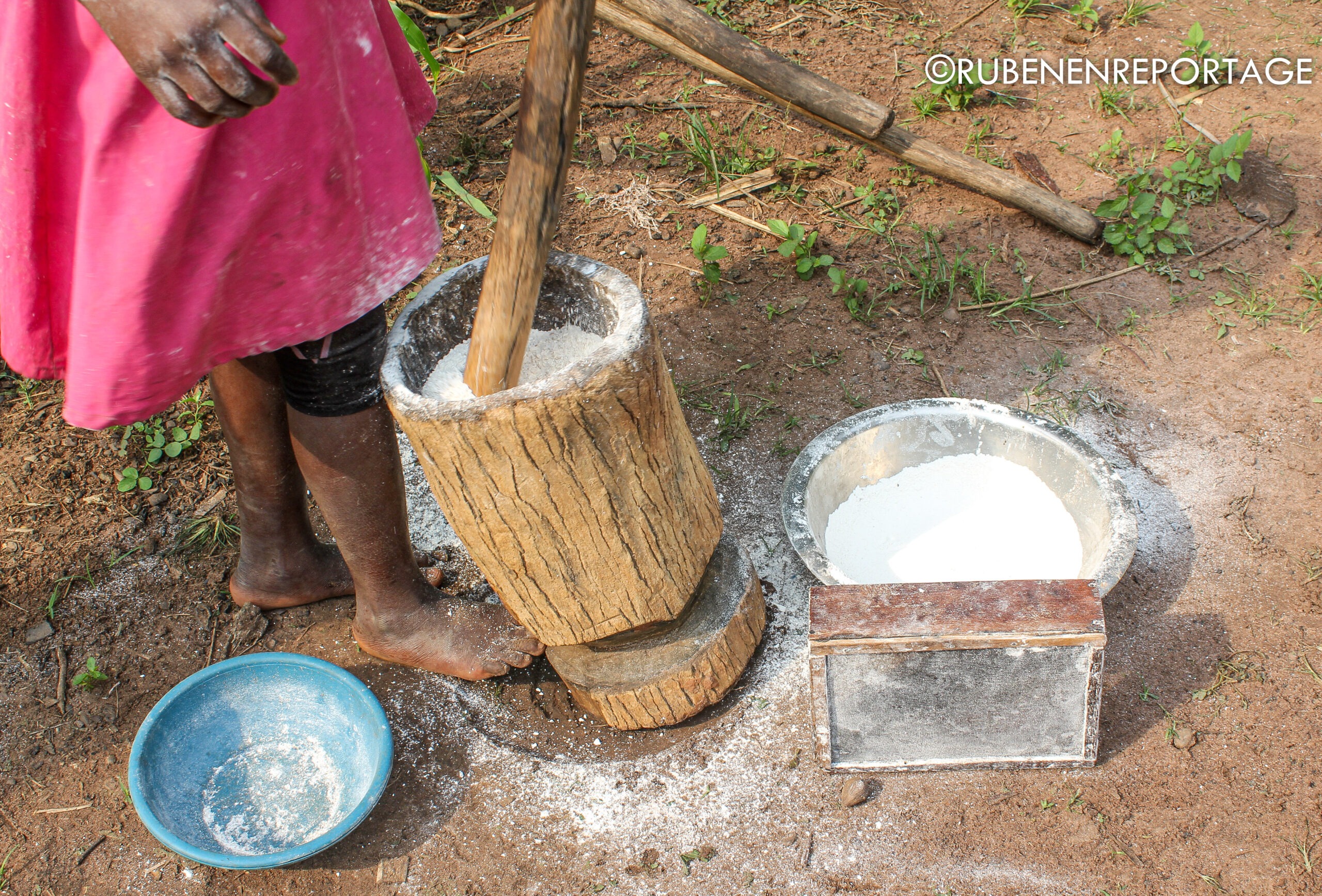In the remote villages of the province of Kasaï-Central in the DRC, an ancestral practice persists: the use of mortar and pestle to grind corn and cassava, in order to obtain the precious flour used to prepare I appreciate it or the foufou one of the staple dishes in the DRC. While in towns and some villages, the arrival of electric mills has relegated this method to the past, some villages remain deeply attached to this tradition, such as those in the territory of Dibaya in Kasaï-Central.
A mortar, pestle and sieve come together harmoniously to transform the grains into precious flour. (Credit: ©Ruben en Reportage)
READ ALSO
Agriculture: when the food abundance of the villages feeds the cities
Early learning and the grinding process
From the age of 5, girls learn to handle the pestle, and by 10 they have mastered the art of grinding as well as adults. The process is demanding, but not insurmountable. For maize, kernels are first moistenedor by adding water just before the grinding, or by soaking them for 1 to 24 hours. This step softens the grains and makes them easier to grind. It is then necessary pound forcefully and rhythmically to obtain a fine grind. From time to time, screenings are performed to extract the fraction of granulometry desired. About 50 minutes are needed to grind 3 kg of grain. The process is similar for the maniocexcept that it is not moistened before being ground.
Under the benevolent eye of the elders, the young girl from Tshiendele village gracefully wields the pestle, a symbol of transmission and pride. (Credit: ©Ruben en Reportage)
READ ALSO
Traditional crafts and the creativity of rural children in the DRC
The children proudly take over, supporting their mothers in their household chores. With enthusiasm, they complete the work in record time, thus providing valuable assistance to the household. (Credit: ©Ruben en Reportage)
A captivating close-up view of the grains in the mortar. Next to it, an artisanal sieve made with local vines, testifying to the ingenuity and creativity of the community. (Credit: ©Ruben en Reportage)
Symbolism and attachment to tradition
Although mills are available in these villages, many people, especially the elderly, remain attached to this practice. This is not so much for lack of means to pay for the grinder, although this is often the case, but rather because they consider the mortar and pestle as utensils made from natural materials, harmless to their health. . Plus, it saves them money.
So, in these villages, the mortar and pestle are more than just a tool for processing flour. They represent a deep connection with nature and ancestral traditions. The villagers see in these utensils a connection with their roots, a way of perpetuating a know-how transmitted from generation to generation.
Mother and daughter engage in teamwork during processing, with the young daughter wielding the pestle with skill while her mum sifts with precision. An effective collaboration that reflects the solidarity and mutual aid within these rural communities. (Credit: ©Ruben en Reportage)
Economic benefits and preservation of natural resources
Despite technological advances and the accessibility of electric mills, these rural communities choose to maintain this traditional practice. They consider the mortar and pestle to be imbued with inestimable cultural value, testifying to their identity and their attachment to nature.
Mamu Mbuyamba from Tshiendele village in Dibaya proudly wields her knife to peel cassava tubers, necessary step before their transformation into flour in the mortar. (Credit: ©Ruben en Reportage)
Beyond the cultural dimension, the use of mortar and pestle also has economic advantages.. Indeed, by avoiding using the services of the mills, the villagers save money, which is particularly important in regions where financial resources are limited.
After a meticulous transformation process, the long-awaited white flour rests proudly in the small basin. (Credit: ©Ruben en Reportage)
The mortar, sieve, and pestle rest after completing their mission of transformation. (Credit: ©Ruben en Reportage)
So, the mortar and pestle continue to play an essential role in the daily life of these communities. They symbolize resilience, preservation of traditions and enhancement of natural resources. As the world changes rapidly, the villages of Kasaï-Central remind us of the importance of preserving our cultural heritages and finding a balance between modernity and tradition.
Report produced in the locality of Tshiendele, group of Bakwa-Nkola, territory of Dibaya in the province of Kasaï-Central in the DRC. (Credit @tambourdesvillages)
